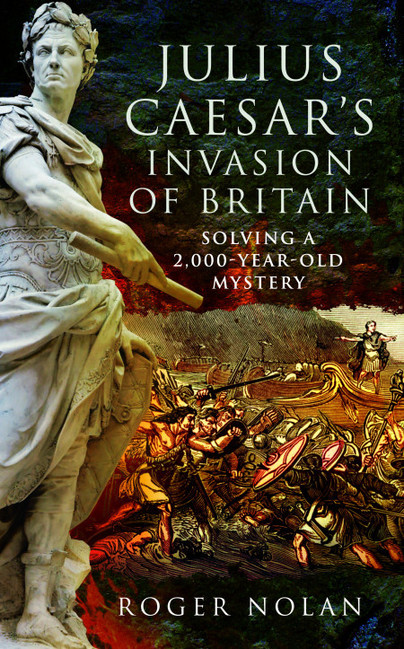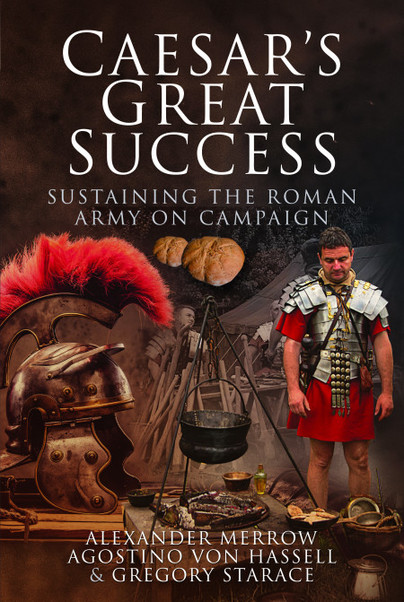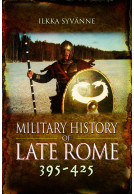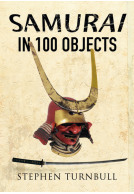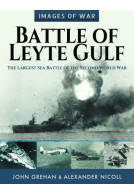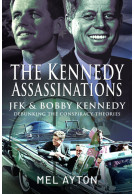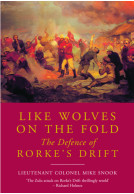Julius Caesar's Invasion of Britain (Hardback)
Solving a 2,000-Year-Old Mystery
National Publicity!
As featured by The Telegraph, May 2019: Forget the Thames, the only way was Essex for Caesar
As seen in The Sun, May 2019: The only was was Essex for Julius Caesar, as new evidence suggests he invaded Britain through the Towie heartland
As covered in the Mail Online, May 2019: Caesar's invasion route of Britain is revealed by remains of 'marching camps' that show he landed at Dover and swept through Essex
(click here for international delivery rates)
Need a currency converter? Check XE.com for live rates
| Other formats available - Buy the Hardback and get the eBook for free! | Price |
|---|---|
| Julius Caesar's Invasion of Britain ePub (5.6 MB) Add to Basket | £6.99 |
Two thousand years ago Julius Caesar came, saw and conquered southern Britain, but just where he landed and the precise routes his army marched through the south of the country have never been firmly established. Numerous sites have been suggested for the Roman landings of 55BC and 54BC, yet, remarkably, the exact locations of the first major events in recorded British history remain undiscovered – until now.
After years of careful analysis, Roger Nolan has painstakingly traced not only the places where the Romans landed, but he has also discovered four temporary marching camps Caesar’s army built as it drove up from the south coast in pursuit of the British tribal leader, Cassivellaunus.
This advance took Caesar across the Thames to Cassivellaunus’ stronghold at Wheathampstead in present-day Hertfordshire. These marching camps are placed almost equidistant from each other and, most importantly, are in a straight line between the coast and Wheathampstead.
Roger Nolan’s research has also enabled him to identify the place mentioned in Caesar’s Commentaries, where the Roman legions were ambushed by the British whilst foraging and where a large battle then ensued – the first known land battle in Britain.
Without doubt, this ground-breaking study is certain to prompt much discussion and reappraisal of this fascinating subject.
... Nolan’s devotion to digging up and mapping out the geographic past is indisputable and laudable.
Toy Soldier & Model Figure magazine issue 244 – reviewed by Mark T. Ford
Controversy is served. This new study will surely generate exciting new discussions on the subject.
Miniaturas JM
Read the full Spanish review here
Well written, researched and interesting.
The Armourer, October 2019
Author article 'Caesar’s British Invasion – Unravelling the Mysteries of Rome’s Earliest Campaign in England' on Military History Now
Military History Now
This is a great account and includes lots of details that could be used by Wargammers to recreate some of the battles as well as for historians looking to understanding the invasion.
Medieval Sword School, Jason Hulott
Read the full review here
As featured on Easton Caller
Easton Caller
The Roman conquest of Britain 2,000 years ago is one of the most important events recorded in history - but exactly where Julius Caesar landed, and the precise route he then took, has remained a mystery.
Daily Mail
Roger Nolan has pieced it together in a new book that claims to solve the 2,000-year mystery.
The Sun
As one of history’s greatest generals, Julius Caesar invaded Britain twice in the 1st century BC, but historians have struggled to establish his route without evidence such as temporary marching camps that his vast army would have constructed. Now four camps have been discovered in Kent and Essex, to the excitement of archaeologists and metaldetectorists with potential new areas to explore.
The Telegraph 5/5/19
New research is challenging long-held assumptions that, after landing around Walmer and Deal in 55BC and 54BC respectively, Caesar crossed the River Thames in or near present-day London, probably Brentford.
This book rather takes the ‘wrong’ approach in attempting to ‘make the evidence fit the crime’ in establishing Caesar’s landings and line of march in 54 and 55BC. However it works and offers a compelling theory that uses comparisons of Caesar's accounts and the geography of the time to take his line of march to the Thames at East Tilbury rather than previously postulated upstream locations. Given that the distance in time to the events and the absence of definitive supporting evidence the author relies on the identification and locations of Roman marching camps and brings the narrative history alive with a few excellent maps and modern photographs of the locations. Also a good general narrative history of Caesar’s invasions of Britain.
Michael McCarthy
Michael McCarthy. Battlefield Guide
About Roger Nolan
Roger Nolan has had a life-long interest in the history of Roman Britain. Following many years of research into the historical and archaeological evidence surrounding Julius Caesar’s invasions of the UK, this is Roger’s first book. Having worked in a number of commercial and financial undertakings, Roger is retired and lives in Kent.
Caesar's Great Success Sustaining the Roman Army on Campaign (Hardback)
Logistics have become a principle, if not a governing factor, in modern military operations. Armies need to be fed and supplied and the larger the army, the greater the logistical difficulties that have to be overcome. Two thousand years ago, when communications were far more primitive, the size of armies was limited by the difficulties of supply. It was because the Romans developed a sophisticated supply system that they were able to maintain large armies in the field – armies that conquered much of the then known world. In Caesar's Great Success: Sustaining the Roman Army on Campaign the authors…
By Alexander Merrow, Gregory Starace, Agostino von HassellClick here to buy both titles for £39.98







